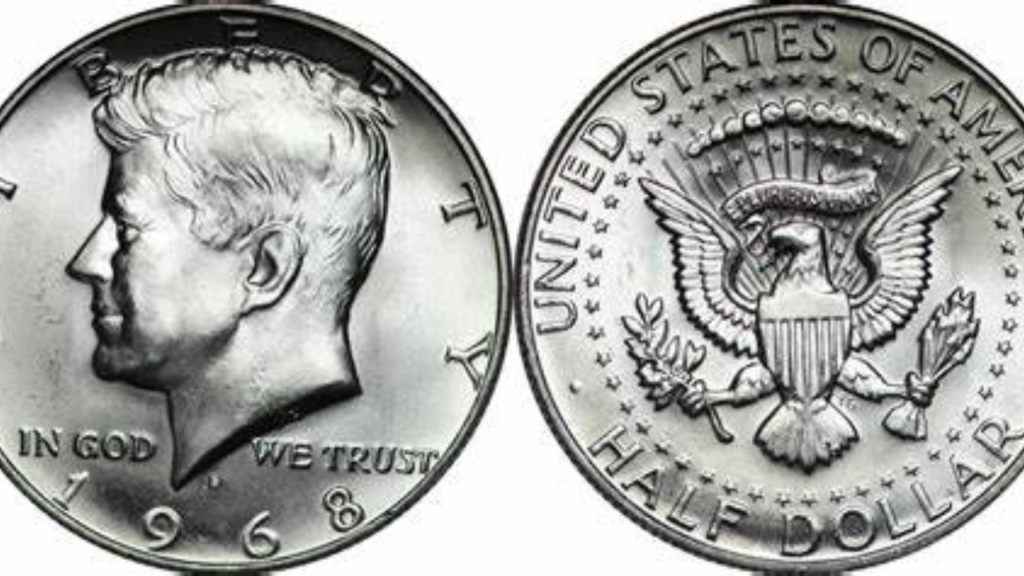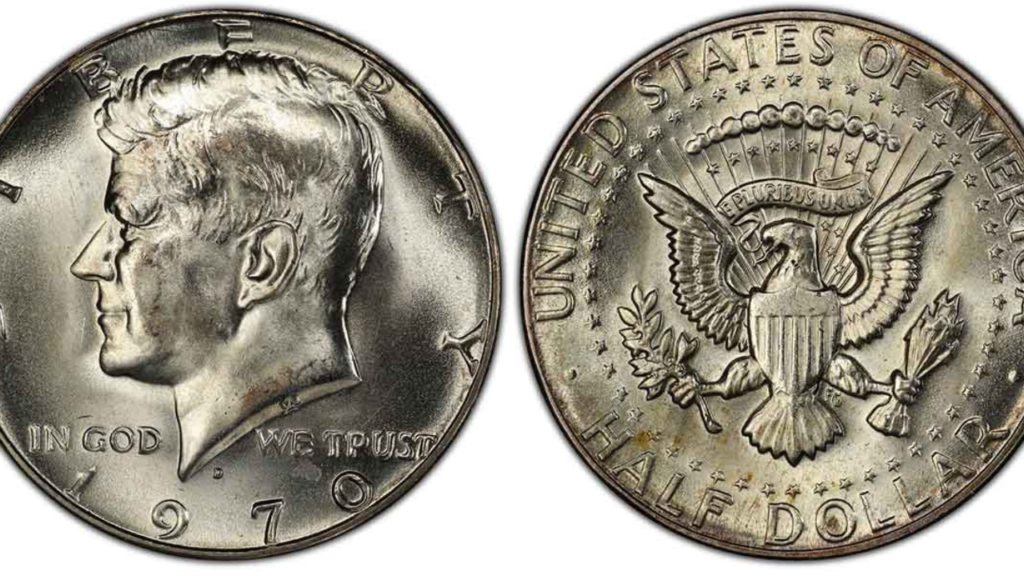The $45,000 1970-D Kennedy Half Dollar: When it comes to coin accumulating, few cash capture the creativeness pretty just like the $45,000 1970-D Kennedy Half Dollar. More than just a bright memento, this uncommon piece of American numismatic history is a blend of presidential legacy, restricted mintage, and precious steel fee that has enthralled creditors and buyers for many years. Its allure lies now not best in its shortage but additionally in the thrilling tales of surprising discoveries and auctions that continue to interrupt price statistics.
In this complete guide, we’ll take you deep into the world of the 1970-D Kennedy Half Dollar. You’ll study its specific heritage, what makes it so rare, how to perceive it, and why condition topics greater than you would possibly think. Whether you’re a first-time collector or a pro hobbyist, this text will provide the insights and equipment to assess, authenticate, and doubtlessly make the most of one of the most treasured 1/2 greenbacks in American coinage.
| Feature | Details |
|---|---|
| Coin | 1970-D Kennedy Half Dollar |
| Mint Location | Denver (“D” Mint Mark) |
| Mintage | 2,150,000 |
| Composition | 40% Silver |
| Circulation Status | Not released for general circulation; only in Mint Sets |
| Typical Value | $25 to $100 (Average Condition) |
| High-Grade Auction Value | Up to $45,000 (MS67+) |
| Where to Buy/Sell | PCGS, NGC, Heritage Auctions |
The 1970-D Kennedy Half Dollar is a present day American rarity with giant ancient and monetary cost. Whether it’s the final silver half of dollar, the bottom mintage, or the joys of finding one unexpectedly, this coin stands proud.
If you accept as true with you have one, don’t guess—get it authenticated and graded. You might be keeping onto a five-discern treasure without even understanding it.
Whether you’re a lifelong numismatist or truely curious approximately coins, the 1970-D Kennedy Half Dollar is a shining reminder that the maximum precious discoveries often come from the most surprising locations.

What Makes the 1970-D Kennedy Half Dollar So Special?
The Kennedy Half Dollar become first introduced in 1964, just months after President John F. Kennedy’s tragic assassination. Intended as a tribute to the overdue president, the coin was extensively embraced by means of the general public and became an instantaneous collector’s object. Unlike most coins that slowly advantage recognition over time, the Kennedy Half Dollar entered the highlight right now.
But the 1970-D Kennedy Half Dollar is in a league of its own. It marks a pivotal moment in U.S. Minting records. That 12 months changed into the last the Mint used 40% silver in half of dollar cash—a holdover from an earlier generation when U.S. Cash had been normally struck in silver. Beginning in 1971, all Kennedy 1/2 greenbacks transitioned to copper-nickel clad, making the 1970-D the swan tune for silver coinage within the series.
Limited Mintage = High Demand
Adding to its allure is the reality that only 2.15 million of these cash had been produced—a fraction compared to other years. For instance, over 295 million Kennedy 1/2 greenbacks were minted in 1967. The 1970-D’s low mintage makes it the bottom of any commercial enterprise-strike Kennedy Half Dollar until 2005. However, those weren’t typical commercial enterprise moves.
The 1970-D became by no means launched into preferred stream. Instead, it changed into packaged solely in U.S. Mint Uncirculated Sets sold to collectors. That approach the common American could in no way have received one in pocket alternate. The rarity, coupled with silver content, pushes this coin into top class territory—especially in uncirculated or high-grade condition.
Why It Can Be Worth $forty five,000 or More
Most circulated 1970-D 1/2 bucks are worth between $25 and $100, on the whole due to their silver content and collectible fame. But cash in incredible situation—specifically those graded MS67 or higher by using licensed grading offerings like PCGS or NGC—can command remarkable fees. One MS67 instance famously offered at auction for over $45,000.
Factors That Drive Value:
- Condition (Grade): Coins in Mint State 67 or higher are tremendously uncommon and command premium prices.
- Silver Content: Composed of forty% silver, those coins are well worth more than face fee simply by using soften weight.
- Collector Demand: Completing a Kennedy series requires the 1970-D, making it a ought to-have.
- Historical Significance: As the final silver half dollar in popular manufacturing, it holds numismatic weight.
With greater collectors coming into the market, demand keeps to upward thrust. Coins with deep cameo assessment or perfect strike info fetch even higher expenses—occasionally reaching six figures if the coin is a top pop (the best recognised).
How to Identify a 1970-D Kennedy Half Dollar

Finding a 1970-D Kennedy Half Dollar would possibly feel like searching for a needle in a haystack, however with the right technique, you could turn out to be your own coin detective. Here’s what to look for:
Step 1: Find the Mint Mark
Flip the coin over to the obverse (front). Just beneath Kennedy’s neck and above the date, you should see a small “D” mint mark. This signifies the coin become struck in Denver. If there’s no mint mark or if it’s an “S” (San Francisco), it’s no longer the coin you’re looking for.
Step 2: Confirm the Year
Make sure the date is virtually marked as 1970. Be wary of cash with altered dates. Fakes exist, mainly when the fee is high.
Step 3: Test for Silver Content
Genuine 1970-D cash are forty% silver, so they experience heavier and look barely distinct than clad cash. Use those techniques:
- Weight Test: Should weigh around 11.5 grams.
- Edge Inspection: A silver coin may have a often strong gray aspect; copper-nickel coins have a visible copper stripe.
- Ring Test: Tap the coin and concentrate for a high-pitched “ping”—a characteristic of silver.
Step 4: Assess the Condition
Condition is the whole thing on the subject of price. A coin’s surface should haven’t any scratches, bag marks, or discoloration. High points—like Kennedy’s cheekbone or hair—need to be crisp.
- MS67 or higher: Nearly faultless and extraordinarily valuable.
- Cameo or Proof-like: Adds more cost if the surfaces evaluation with frosted reliefs.
The Role of Mint Sets in Finding a 1970-D
Unlike most coins, the 1970-D became distributed simplest in Mint Sets. These reliable collector sets blanketed cash from each the Philadelphia and Denver mints. Since they had been never circulated, the cash interior are usually in awesome form—ideal for high grades.

If you come upon a sealed 1970 Mint Set, you could be searching at a small fortune. Many untouched units still include a pristine 1970-D 1/2 dollar. In reality, creditors frequently purchase entire Mint Sets just to extract the 1/2 greenback interior.
Preserve sealed units as-is that if viable. The value is frequently more when the set is unbroken and authenticated.
Real-Life Stories of Lucky Finds
Imagine shopping for a coin set at a storage sale for $10 and finding a coin worth tens of hundreds inner. That’s precisely what happened in 2018 while a flea market client unknowingly bought a 1970 Mint Set with a Kennedy Half Dollar that graded MS67. It offered for over $20,000.
Another tale comes from a family property in which an antique container of coins contained a 1970-D 1/2 dollar. After grading and authentication, it become appraised at over $30,000.
These memories aren’t remoted. Social media and collector boards are full of similar debts. The key takeaway? Always test antique coin jars, family heirlooms, and inherited collections.
FAQs:
How do I know if my half dollar is silver?
Look at the edge. If it’s a uniform silver color without a copper stripe, it likely contains silver. Also, silver coins have a higher-pitched ring when dropped.
What does MS67 mean?
MS stands for “Mint State.” A grade of 67 means the coin is nearly perfect with sharp details and minimal flaws. Only a tiny percentage of coins achieve this grade.
Where should I get my coin appraised?
Reputable grading companies like PCGS and NGC offer grading and authentication services. You can also visit a trusted coin dealer.
Can I still find one of these coins in circulation?
It’s extremely rare. Since these coins were never circulated, they’re usually found in collector sets or old estates.








